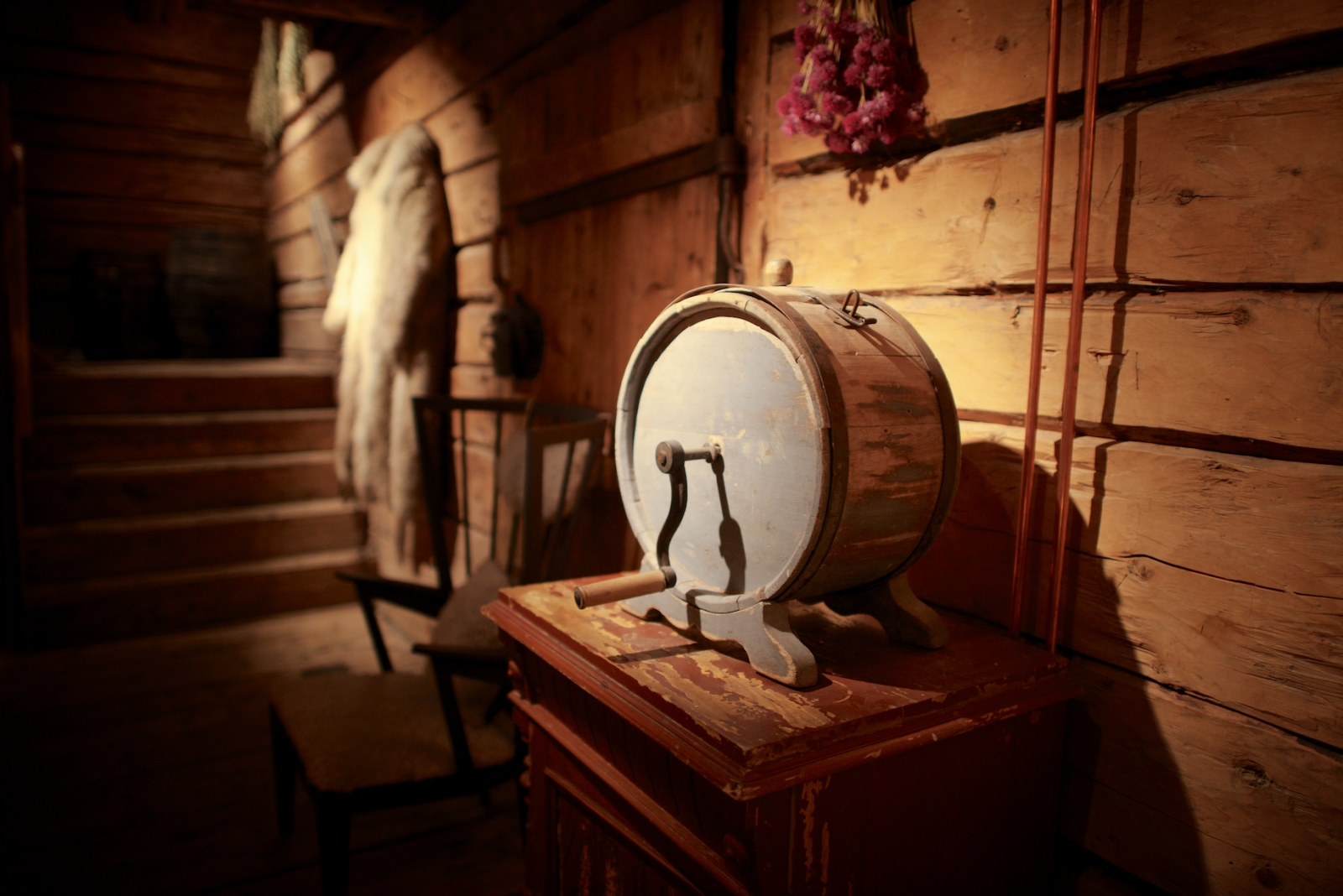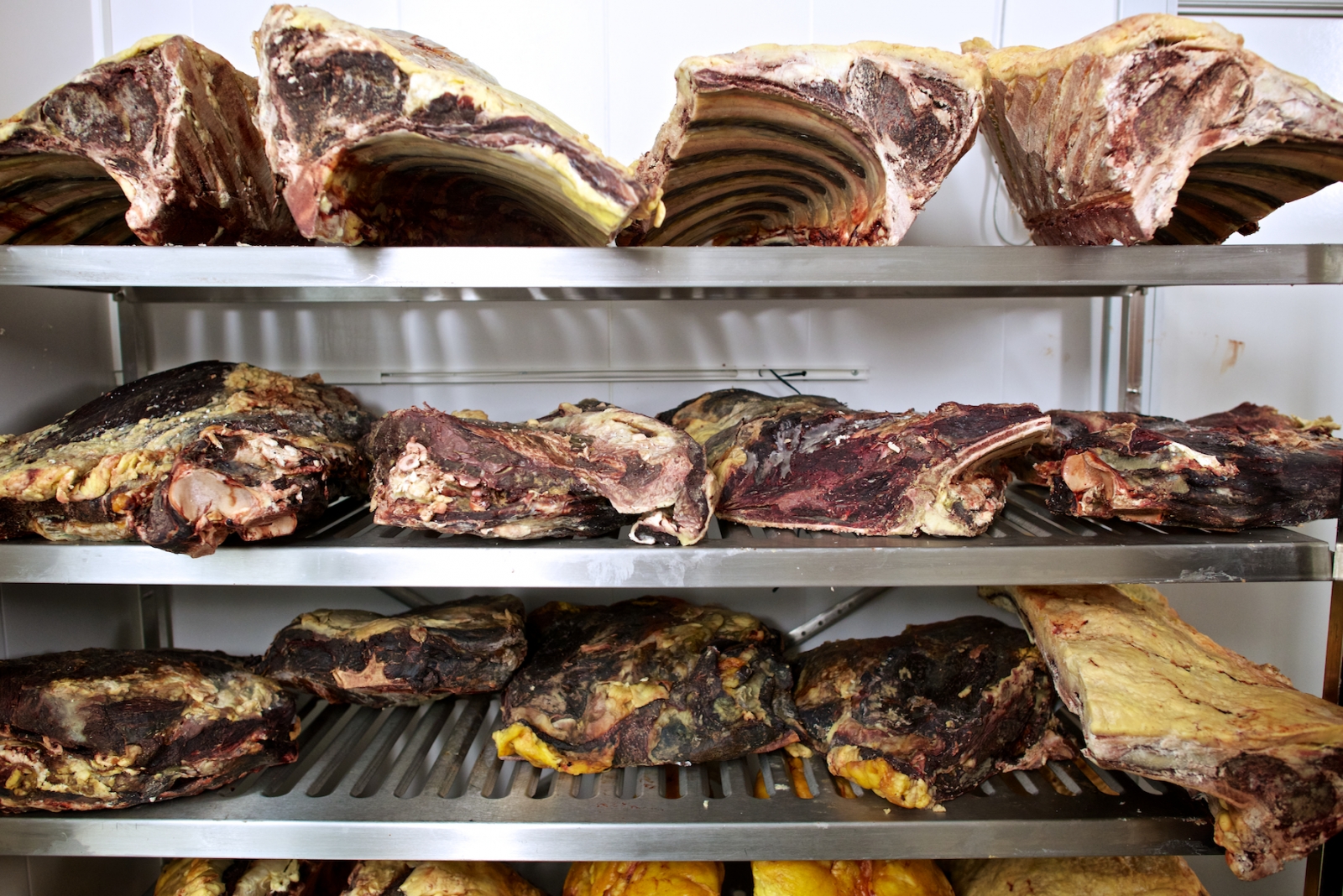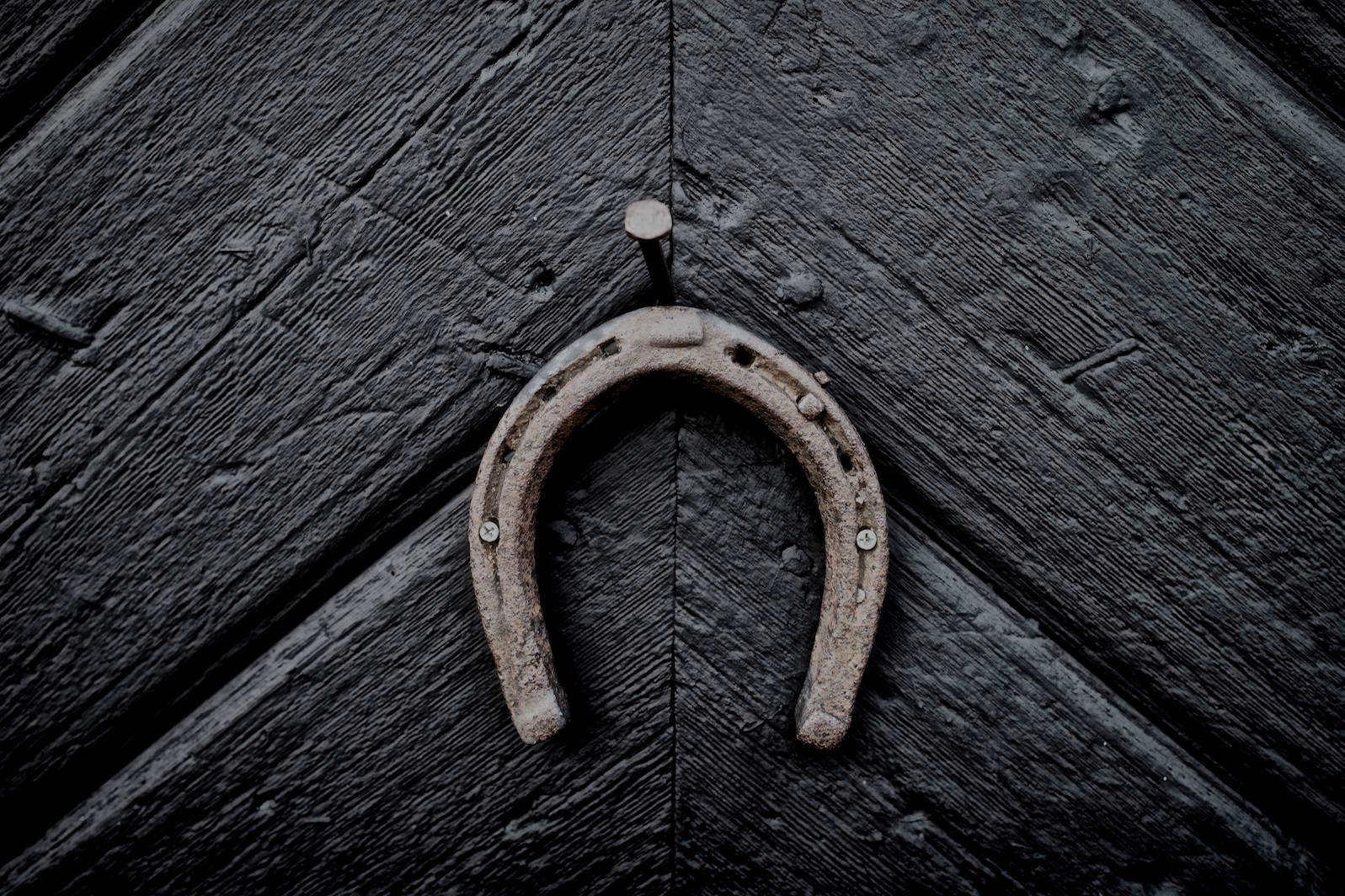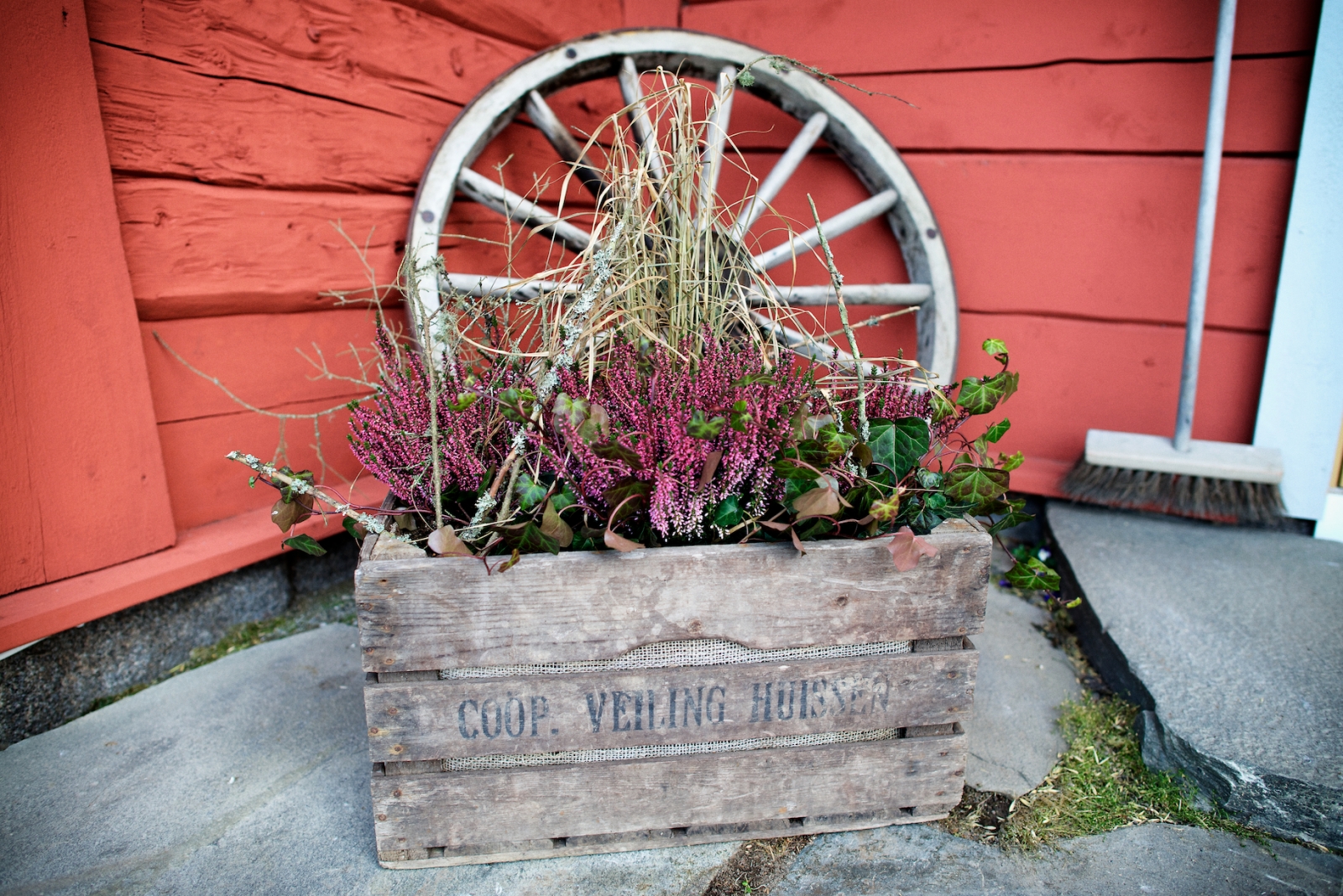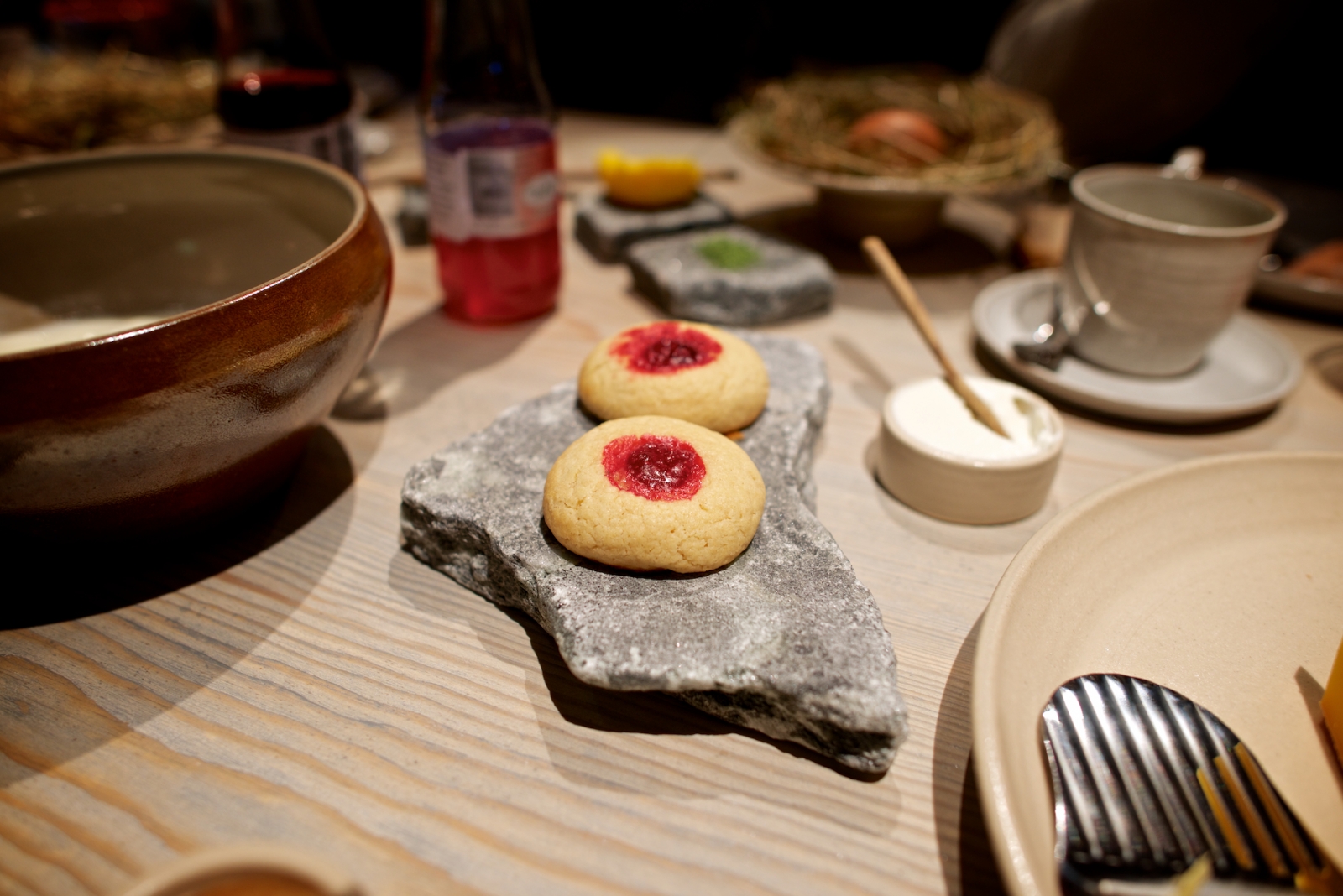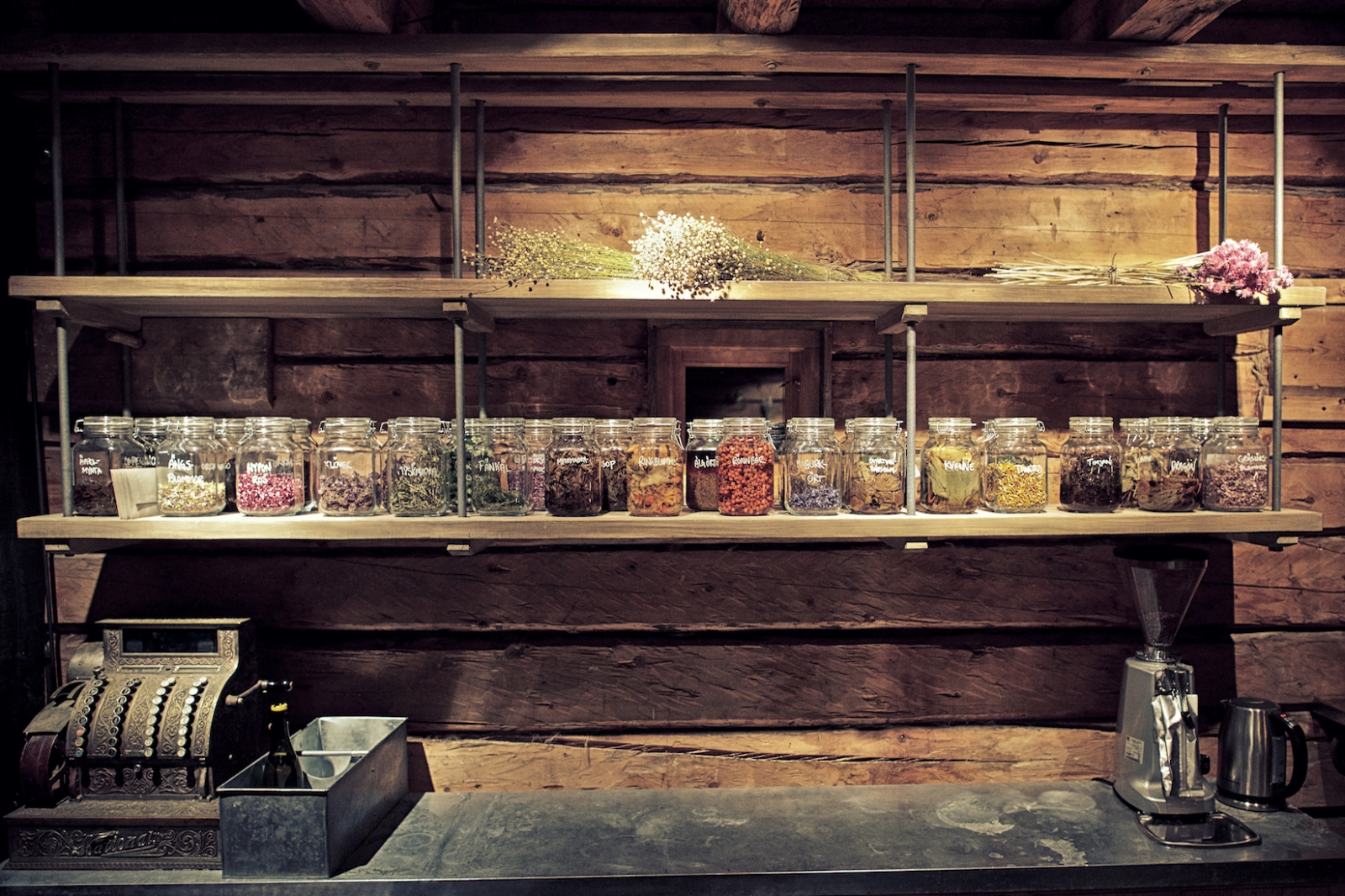Column
A Walk
— On the Wild Side
A late afternoon in November, somewhere in Sweden, and already the inky black swathe of sky seems to envelop the rental car tightly. Two narrow yellow beams from the headlights carve out our path through the gloom over the treacherously icy roads of this mountain plateau. It’s captivating, hypnotic even; the dull rumble of tyre over ice, the ghostly soft glow from the dashboard, the car seemingly piloting itself. You see, a trip to Fäviken doesn’t seem so much of a journey as a pilgrimage. For what else could a jaunt to eat at a restaurant just 200 miles south of the Arctic Circle be? And, like all the best experiences in life, I never saw this one coming.
To tell the story of Fäviken Magasinet you first have to understand the turbulent history of Jämtland province in which it is located. For it is here some 1,300 years ago a band of Norwegians from North Trøndelag settled after fleeing the tyrannical rule of King Eystein Hardråde. They were led by a man called Kjettil Anundsson, who dreamed of one thing: freedom. He named the new province Jämtland, and for the next 400 years it remained an autonomous peasant republic, with its own laws, currency and even language.
Today, some 900 years later, after being conquered by Norway, governed by Denmark, and then ceded to Sweden, there’s still the faint whiff of independence in Jämtland. Indeed, you may even see the blue, white and green flag of the province proudly fluttering in the breeze, and the old language of Jämsk is still spoken to this day. Mavericks, some may say, but maybe pioneers is more apt. For it is this ancient pioneering spirit that is still alive today in the people of the region, and it’s this same spirit that manifests itself in everything that Fäviken does.
Suddenly, just as we feel like we’ve reached the edge of the world: “you have reached your destination,” announces the staccato voice of the car’s GPS, much to our consternation. It’s pitch black outside, and at first only the evocative smell of burning birch wood marks this place out as habited. Our first tentative steps over the icy ground lead us to the source of the smell: two large metal bowls of glowing birch embers welcome us, burning bright in front of a large wooden house painted Falu red. We appear to have arrived.
Fäviken itself is an 8,400 hectare estate of sweeping hills, shimmering lakes and lush forests. It began as a farm in the late 19th century and grew to be a place where people would come to hunt, fish and eat. In 2003 the estate was bought by the hedge fund magnate Patrik Brummer who set about turning Fäviken Magasinet into a restaurant as remarkable as the landscape is beautiful.
The man tasked with running the restaurant at Fäviken is 29-year-old Jämtland native, Magnus Nilsson. Looking like a cross between a mythical Norse deity and a heavy metal guitarist his boyish enthusiasm comes across instantly.
Nilsson started his cooking career in Sweden before moving to Paris and beginning his tutelage under a certain Pascal Barbot of the three Michelin-starred L’Astrance. There he learnt perhaps the most valuable lesson a chef can learn: produce is everything.
Returning to Sweden a few years later, Nilsson continued to cook at a Stockholm restaurant but became disillusioned with the lack of decent produce and he quickly started to lose interest in cooking altogether. Training his sights on the world of wine instead, Nilsson embarked on the ambitious Master of Wine programme and spent almost two years studying oenology. He wanted to be a wine writer.
Then in 2008, a chance call from a friend working at Fäviken saw Nilsson head back north, not to cook, but to establish the estate’s wine cellar. An initial three-month stint was extended, and when Nilsson’s friend moved on to new endeavours, out of necessity Magnus was left in charge of the kitchen. Slowly, his passion for cooking began to return, and the Brummer family enthusiastically embraced Nilsson’s plans to turn Fäviken Magasinet from a place that served moose fondues to over a hundred guests to something much smaller and more ambitious. Something that people would travel for.
Today, there are just seven chefs working in the kitchen at Fäviken serving dinner to a lucky 14 people (16 at a push) each night. Remarkably, some 50% of the chefs’ time is not spent cooking in the kitchen, but on sourcing the very best produce the region has to offer. In fact one chef has full-time responsibility for managing the produce that comes in to Fäviken. And what produce it is! By virtue of its mountain location and a northerly climate tamed by the Gulf Stream, and with easy access to the coastal waters around Trondheim there’s a massively diverse array of produce available, from game and meat to seafood, vegetables, wild herbs and berries.
But this isn’t food that’s tweaked and tweezed to within an inch of its life. It’s simple, pure food with a healthy dose of respect for freshness, not only of ingredients, but of preparation too. Most times dishes are prepared and finished at the last possible moment to ensure not a single molecule of volatile flavour compounds is wasted. Nilsson is clearly a mercurial chef and his is an intuitive skill that can only come about as a result of absolute mastery of the technical elements of his craft.
Dinner at Fäviken (and it is only dinner served here) starts at 7pm sharp. Very sharp. In fact, Nilsson has been known to lock the doors and turn away latecomers at a hardly tardy 7:05pm, no exceptions! Needless to say, we had arrived on the estate early, which gave us time to check-in to our rooms – a unique mix of modern/Nordic traditional and spartan/luxurious – and get ready for dinner; for unless you live in the area, a meal at Fäviken will involve the hardship of a cosseting overnight stay followed by a mind-blowing breakfast in the morning.
Although the restaurant is usually fully booked for weeks in advance, by some quirk of fate there would be just five of us for dinner that evening. “As there are only five of you, we’ve decided to seat you together,” announces one of the staff. “We were waiting until you had all arrived to see what you were like. You all seem like nice people.” Relieved to have passed this test of normalcy, and delighted to share the experience with others (one of whom it turned out I knew virtually through the powers of the interweb) we were ushered in to a large ground floor room made from rough unfinished timbers and furnished with sheepskin covered chairs and a striking 100-year-old wolf skin coat. The room used to be a grain store, but is now used as the restaurant’s lounge area and it is here that a meal at Fäviken begins and ends.
Snack: Lightly fermented turnips. While awaiting the rest of the dinner guests, my companion and I are served fermented turnips – simple wedges of crisp, cooling earthiness. And then, as I sat back on the sofa taking in the surroundings, with the hiss and crackle from the adjacent fireplace and a glass of chilled champagne in hand, suddenly everything felt, well, right.
When the rest of the guests arrived, the appetisers began in earnest and came in a whirlwind of plates.
Appetiser 1: Flaxseed and vinegar crisps, mussel dip. Tart translucent shards of flaxseeds cooked in water and potato starch had been sprayed with vinegar and came with a soft mussel emulsion dip. They were not so much ‘eaten’ as inhaled; nutty warmth from the seeds, the acidic bite of vinegar, and the cooling taste of the ocean from the dip.
Appetiser 2: “A little lump of very fresh cheese served in warm whey, lavender.” An agitated looking Nilsson comes in and brings us our next dish. “Less talking, more eating” he gently admonishes us – such is the buzz of conversation around the table we’ve barely had time to finish the previous course. We do as we’re told and make a start on the next dish. Except it’s not so much a dish as a memory. A childhood memory of Nilsson’s to be precise, one indelibly etched in his mind from a time he watched his grandmother make fresh cheese on her farm many years ago.
Very fresh raw milk from Fjällko mountain cows had been gently curdled with rennet and then cut into cubes. It was served within minutes of being made and was delicately perfumed with a single petal of dried lavender that had been gently rubbed between the fingers to release its aroma. That something so simple has the power to shock so completely is an enduring mystery to me. We’re instructed to breathe in the delicate floral fragrance from the lavender then eat the whole thing in one go, like an oyster. The ambrosial, silky texture of the lukewarm cheese was astonishing – a taste of fresh milk and mountain pastures. An edible cloud.
Appetiser 3: “Wild trout’s roe served in a crust of pig’s blood.” A dish that took two years to perfect arrived next. Brittle, shiny black croustades made from pigs’ blood were filled with pigs’ blood custard and topped with glistening pearls of impeccably fresh wild trout roe from the estate’s lake, which burst with salty egg yolk-like creaminess in the mouth. A creaminess that was wonderfully balanced by the metallic tang of blood. A bold, beautifully executed dish and understandably one of Nilsson’s most iconic.
Appetiser 4: “Pig’s head dipped in sourdough and then deep fried before being injected with sour cream.” Exactly as billed on the menu, these crisp bites of hot, porky, fatty goodness were as comforting as a great big hug.
Appetiser 5: Crispy lichens, lightly soured garlic cream. Fluffy tangles of reindeer lichen and seaweed-like Icelandic moss have been steamed then deep fried to a fragile crisp. They were seasoned with shavings of dried trout and cured egg yolk. The lichens had a curious mushroom-like bitterness to them, while a garlic perfumed dipping sauce of sour cream bound everything together in the mouth nicely.
Appetiser 6: Cured sow. The last of our appetisers was slices of cured pork from a “good-sized sow.” Nilsson makes all the charcuterie onsite; indeed you can see the latest examples hanging in the dining room finishing their maturation process. The thin slices of meat had a good layer of creamy fat that melted seductively in the mouth. The taste was just phenomenal too: robust, deep and savoury – as good as any Jamón Ibérico.
And with this, the end of the appetisers, we’re lead up some creaky wooden stairs to the main dining room above, where our table decorated in nothing more than dried garlic bulbs was waiting for us. The room is rough and rustic, sparsely decorated with tapestries, dried herbs and hanging meats. Over the speakers traditional Jämtlandian folk music is playing, with its shrill, eerie, and hypnotic sound of the fiddle seemingly transporting us back hundreds of years to a bygone era.
Course 1: Scallop “i skalet ur elder” cooked over burning juniper branches. Another iconic Fäviken dish – perhaps the most representative of Nilsson’s cooking – heralds the start of the main courses. Pristine scallops from Hitra on the west coast of Norway have been steamed in their shells over burning juniper branches, the meat is then separated and the cooking juices are poured back into the shell.
A deceptively simple dish, but the devil is in the details and timing is everything, with the scallops needing to be served no later than 90 seconds after being cooked. “Eat the scallop, then drink the broth,” instructs Nilsson. Needless to say, its taste is something that will remain in a little corner of my mind for a very long time indeed. The enormous scallop took a good four bites to finish and was as fresh and as sweet as could be. We greedily dunked them into the iodine saltiness of the broth and then drank the rest of the liquid straight from the charred shell. This was as close to culinary perfection as you can get. Simply stunning!
Course 2: Lobster, fermented and dried mushrooms, rosehip. Next, a dish of lobster, grilled so that it is still almost raw in the middle. Rosehips added a sweet and sour note, while dried mushrooms added a meaty umami punch. Another wonderful dish.
Course 3: Skate and onions. Soft skate, cooked to translucent exquisiteness was served with petals of sharp onions and a herb sauce. I loved the boldness of this dish, the way the flavours of the onions were left unmasked, their raw pungency going so well with the sweetness of the skate.
Course 4: Monkfish grilled over the fire, carrot cooked in whey, spruce and “attika” vinegar. Norwegian monkfish had been grilled over an open fire so that the outside retained a gentle smoky char while the centre remained rare, glowing a pretty pearlescent pink. It was served with a baton of carrot cooked in whey, whose caramelised lactose intensified the sweetness of the vegetable. A small, but very potent dollop of spruce jelly made with alcoholic ättika vinegar really set this dish alight, its cooling flavours of the forest almost fizzing on the tongue.
Course 5: Raw mussel and pea pie. Then, a one bite wonder of raw mussel served in a shortcrust shell made from Jämtlandian grey pea flour and filled with an emulsion made from fermented pulses. Although devoured in a couple of seconds, this dish requires a huge amount of effort to construct, requiring a whole year to produce both the fresh and fermented components.
Course 6: “Very fresh potatoes cooked with autumn leaves that have been decomposing under the snow during the winter.” Next, we dug into a pile of decomposing autumn leaves, smelling of warm earth and wet forests, and picked out small sweet-tasting potatoes, which we crushed between our fingers and dipped into some fresh salted butter.
Course 7: Steamed leek, cream whisked with mead, dried and grated cod’s roe. Another minimalist masterpiece was a single leek, steamed and served with yeasty mead cream and seasoned with salty dried cod’s roe.
Course 8: “Porridge of grains and seeds from Jämtland finished with a big lump of butter, broth filtered through moss.” A hearty porridge made from various grains was finished with lashings of smooth butter and a beef broth filtered through moss was poured over the top. This dish was a riot of textures – its comforting warmth acting like central heating for the soul.
Course 9: Marrow, dices of raw cow’s heart, turnips, toast, and herb salt. When Nilsson next comes into the dining room it is with one of his cooks who is carrying a large roasted bone that instantly fills the room with its smell. The cow’s femur is set on a wooden block in the middle of the room and Nilsson begins to saw through the bone brutally like some medieval surgeon. The bone is then taken away and the molten ooze of marrow is extracted from its core. The still-pink marrow is then mixed with dices of surprisingly tender raw cow’s heart and crisp grated turnip. We place a little spoonful of the mixture on slices of grilled sourdough, sprinkle some lovage salt over the top and tuck in. This is rich, dense, hearty food – food to get your blood pumping and a joy to eat. One of the true highlights of the meal.
Course 10: Sirloin from a retired dairy cow matured for 6 months, sour onions. And then there was beef. Oh, the beef! Remember the first time you tried real Parmigiano-Reggiano cheese as opposed to the fake dandruff-like powdered stuff, or real vanilla instead of the chemical-laced flavouring? Remember what a revelation it was? Well that’s how I felt about this beef.
Meat at Fäviken is purchased as whole animals, usually when they are still alive. The restaurant then takes care of butchering and ageing so as to give it absolute control of the final quality. And what glorious quality it is. The piece of beef we were served came from a local 10-year-old dairy cow that had been dry-aged for a staggering 6 months. To give you some comparison, most beef you’ll find in a supermarket comes from castrated bulls of around two years and you’ll be lucky if it’s been aged at all, while the best steakhouses will typically dry-age their beef for around a month. Be in no doubt then, this is seriously radical stuff.
The beef had been roasted in a pan; its level of doneness judged only by sight and touch, which in today’s world of sous vide machines and meat thermometers seems fantastically quaint. The result is something really quite extraordinary: a piece of tender beef – not too tender, mind – with a good outer charred layer yielding to pinky rare in the middle. Its flavour was profound, complex, and nutty; the ultra long dry-ageing serving to intensify all those meaty flavours and add a slight blue-cheese gaminess to it. It was garnished simply with some acidic, yet creamy, sour onions that had been gently cooked in whey and some sliced root vegetables. This was beef from an animal that’s worked for a living. Beef in dazzling Technicolor. Beef as it should be.
Course 11: Next, a simple cheese course of thin slices of black radish, reduced yoghurt whey and chunks of bitingly sharp local cheese.
Course 12: Fermented lingonberries, thick cream, sugar, blueberry ice. And then, all too quickly, desserts are upon us. The first of which was another product of Nilsson’s childhood memories. Ruby coloured vattlingon, or fermented lingonberries, were served like jewels on a long wooden spoon with a dollop of thick cream and a sprinkling of sugar, while another spoon held a scoop of refreshing blueberry ice.
Course 13: Egg yolk preserved in sugar, crumbs of pine bark cake, ice cream seasoned with meadowsweet. The next dessert needed a little input from us to complete and we were instructed to mix together an egg yolk preserved in sugar with crumbs of pine bark shortbread. “Like you’re making cement,” says Nilsson encouragingly. Pine bark has been used to make flour for thousands of years in the Nordics, but its use in baking nowadays is a bit of a lost art. Here the sablé-like crumbs bound in the thick luxurious egg yolk had a taste of fresh pine and caramel. To go with it, some meadowsweet ice cream balanced the dryness and crunch of the pine bark biscuits and added a fantastic taste of ground almonds.
Course 14: Sour milk sorbet, raspberry jam and whisked duck eggs. The Fäviken estate used to house a dairy school for young women, and one of the things left behind was an old hand-cranked Husqvarna ice cream machine dating back to 1920. It is this same old machine that is brought into the dining room and used to make a sour milk sorbet before our very eyes. The fresh, slightly tart milky sorbet was then cocooned in vast soft folds of duck eggs whisked with golden syrup, while a little puddle of raspberry jam lay hidden underneath just waiting to be discovered. Can there be anything more comforting for dessert than milk and berries? This was a taste of summer meadows rekindled in the middle of a frosty November evening.
Petit fours: Finally we retreat back to the lounge downstairs where we are served black coffee and a large box of tricks containing a cornucopia of Nordic treats such as meat pies, raspberry ices, tar pastilles, meadowsweet candies, dried berries, sunflower seed nougat, and smoked toffees. We also managed to make a fair dent in the house made digestifs including a deliciously unusual duck egg liquer and one made from sour cream.
And then, sometime in the small hours, after much coffee and laughter, we retire upstairs to bed. A revitalising sauna for some and a long dreamless sleep (I’m guessing) for others. Except I couldn’t sleep. Lying on the crisp cotton sheets of my bed in the pitch-black silence of the moonless night my mind was working overtime trying to understand the meal I’d just had. The sights, sounds, smells and flavours (my god, the flavours!) going round and round in my head like a whirling dervish.
Daylight brought little respite for my overworked mind, but I didn’t have time to dwell on this, as it was soon time for more food. A magical breakfast had been laid out for us – groaning plates of eggs, tjukkmjølk (yoghurt-like sour milk), cloudberries, cheese, cured reindeer, pâtés, porridge and the most heavenly freshly baked thimble biscuits. A brisk morning walk around the estate with the bracing westerly winds blowing in, then a couple of hours reading by the fireplace before the merciless march of time caught up with us and we had to leave to catch our flight back to Oslo.
So just how does one sum up those few hours at Fäviken? I’ve struggled with this for a while and do you know what? I don’t think you can, not in words anyway. It’s such a surreal yet visceral experience – emotions you feel but don’t quite know how to process, and it was with a heavy heart that I got into the car to drive away. For the simple fact was that I didn’t want to leave. I didn’t want to leave this little piece of wild utopia, where the symbiosis of man and nature is so strong and evident in everything that is done here. I didn’t want to go back to the world with its noise and angst and buy-one-get-one-free supermarket offers.
Nilsson and Fäviken have understandably been associated with the new Nordic food movement. But on reflection, there’s nothing really ‘new’ about this cooking. Of course, I’ve never tasted flavours like this in my life but, if anything, this is old Nordic cuisine, just not as anyone would ever recognise it. Old traditions for preparing, cooking and preserving food have been resurrected, and a gentle, responsible bond with the land has been formed. This is food with a beautiful and enchanting simplicity; food that makes you feel connected with nature and just glad to be alive. And really, when it comes down to it, there’s no better feeling than that.
Photos & Text: Nordic Nibbler

